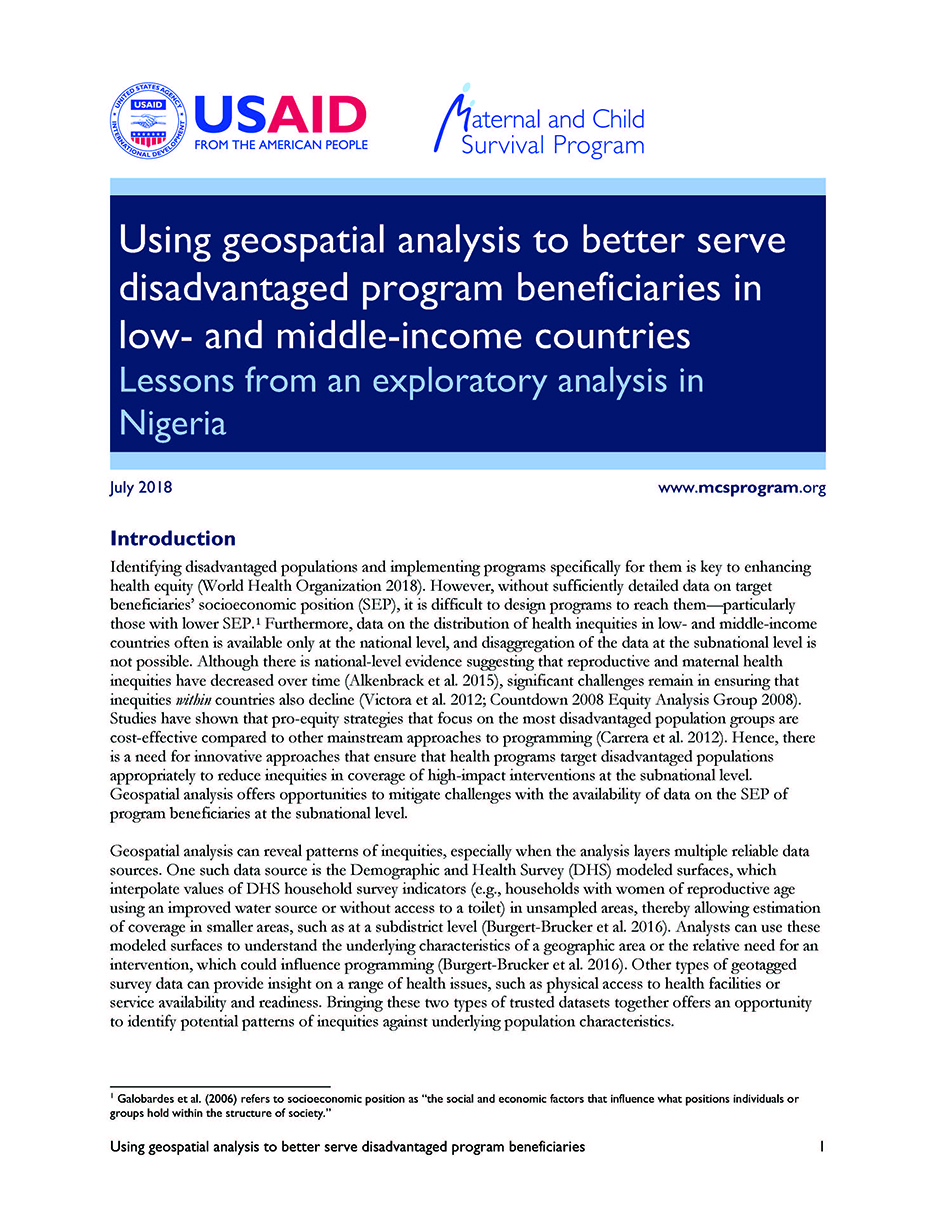Publish Date: July 2018
Author: MCSP
MCSP conducted an exploratory geospatial analysis using multiple geospatial data sources to understand inequities in access to maternal health services in two Nigerian states. The program looked at the relative socioeconomic position (SEP) of the population surrounding MCSP-supported facilities – as measured by a proxy indicator from Demographic and Health Survey (DHS) modeled surfaces for Nigeria. The datasets were DHS spatially modeled surfaces and geotagged facility survey data on multiple indicators, such as availability of emergency obstetric and newborn care (EmONC) services in facilities in Ebonyi and Kogi states. Although the analysis used data from only one country, it sought to answer two broad questions of interest to many low- and middle-income countries:
- How can geospatial analysis help national and international programs identify likely inequities at subnational levels?
- How can geospatial analysis help programs understand whether they are targeting locations in which disadvantaged populations are likely to access services?
Using Geospatial Analysis to Better Serve Disadvantaged Program Beneficiaries in Low- and Middle-Income Countries: Lessons from an Exploratory Analysis in Nigeria (1392 downloads )

